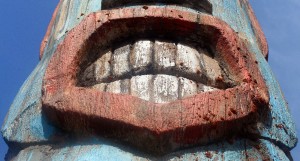 Protect your teeth with the facts.
Protect your teeth with the facts.
Do you know which of these is a myth?
a) Eating acidic things like lemons causes cavities.
b) If you have a cavity, you’ll definitely know it.
c) Once you treat a cavity, the tooth decay stops.
To separate dental health myth from fact, WebMD talked with Kimberly A. Harms, DDS, an American Dental Association consumer advisor and past president of the Minnesota Dental Association. Check the myths and facts below to find out how cavities are caused, prevented, and treated.
1. Sugar Is the Prime Cause of Cavities
Myth and fact. In reality, it’s the acid produced by bacteria in your mouth that causes cavities, says Harms. What the bacteria do, however, is eat carbohydrates — and sugar is one of them. Rice, potatoes, bread, and fruits and vegetables are also carbohydrates.
When you eat anything with carbs, the bacteria become active and produce acid that then eats into your tooth.
“Once they do that, the bacteria now have a nice little hole to live in where your toothbrush and floss can’t reach,” Harms says. The bacteria continue to metabolize carbs, produce acids, and your cavity just keeps getting bigger.
Also, it’s not the amount of carbohydrates you eat that causes tooth decay, but the length of time your teeth are exposed. If you eat a lot of carbs for lunch, that’s one big exposure. But if you spend the day sipping sugary drinks, that’s continuous exposure — and much more dangerous for your teeth.
“We have a saying,” Harms tells WebMD. “’Sip all day and get decay.’”
2. Exposure to Acidic Foods Like Lemons Causes Tooth Decay
Fact. Acidic foods such as lemons, citrus juices, or soft drinks don’t cause cavities, but they may be putting your enamel in danger.
“Acids can cause erosion of the tooth-protecting enamel,” says Harms, “weakening the tooth. If you lose the enamel’s protection and expose the underlying dentin, your tooth is now more prone to decay.”
3. Kids Are a Lot More Likely to Get Cavities Than Adults
Myth. With the help of sealants, fluoridated water, and preventative care, “we’ve actually cut decay in school-aged children by half in the last 20 years,” says Harms.
However, there’s been an increase in cavities in senior citizens “because they have some unique circumstances,” according to Harms. Some medications dry out the mouth, for example, reducing salvia. Saliva is vital in fighting tooth decay because it helps neutralize acids, has a disinfectant quality, washes away bacteria, and helps prevent food from sticking to your teeth.
4. Aspirin Placed Next to a Tooth Will Help a Toothache
Myth. Swallowing aspirin is what helps reduce toothache pain. Since aspirin is acidic, placing it beside the tooth can actually burn your gum tissue, causing an abscess. ”So don’t do it,” says Harms. “Always swallow the aspirin!”
5. All Fillings Eventually Need Replacing
Myth. An amalgam or composite filling needs to be replaced if it breaks down or a cavity forms around it, or if the tooth fractures, Harms tells WebMD. If none of those problems occur, you can keep the same filling for life.
“Fillings do have a life expectancy,” says Harms, but it depends on things like tooth wear and oral hygiene habits. “If you brush your teeth twice daily with a fluoridated toothpaste, and floss or use an interdental cleaner once a day,” you’ll have less tooth decay and your fillings may last longer, she says.
6. If You Have a Cavity, You’ll Know It
Myth. “That’s a big, big bad myth,” says Harms. Mild tooth decay doesn’t cause symptoms. The pain we associate with cavities comes when tooth decay is more advanced and causes damage to the nerve.
Allowing tooth decay to advance can “lead to much more expensive procedures, like root canals,” Harms says. That’s why regular dental checkups are so important.
Also, once a cavity starts, it doesn’t repair itself. A cavity “will always grow once you get to a point where you can’t clean it out any longer.” Once decay gets into the dentin of the tooth — below the enamel — it just continues to grow.
7. Once a Tooth Is Treated, the Decaying Stops
Fact. “You can get decay later on in other areas of the tooth, but the particular decay that was taken out is gone.”
Once you get a cavity filled — and if you maintain good brushing and flossing techniques — you typically won’t get decay in that spot again.
Harms adds one caveat: “Sometimes a filling gets old and the margins where it meets the tooth begin to break down or pull away, and because you can’t reach it to clean it out, bacteria can get in there and decay can begin again.”
8. Cavities Are More Likely Between Teeth
Fact. “Anywhere bacteria can hide and you can’t or aren’t able to reach with a toothbrush or floss is a likely place for decay,” Harms says. The deep grooves on the back of your front teeth are a good place for tooth decay, for example. “And yes it can happen between teeth because the toothbrush won’t get in there and a lot of people have trouble flossing.”
9. Gaps in Teeth Encourage Cavities
Fact. If you have a small gap between your teeth and can’t clean it, you’re more likely to develop tooth decay there.
“Bigger gaps are easier to keep clean,” says Harms, and as long as they are free of bacteria, big gaps are less likely to develop tooth decay.
10. Chips and Cracks in Teeth Lead to Decay
Fact. If cracks and chips create a hiding place for bacteria, a spot where your toothbrush can’t reach, those areas are more prone to tooth decay.
“Lately we’re seeing more and more cracks in teeth because people are grinding,” Harms says. “Stress, worries about the economy, it makes some people grind their teeth more. Stress can play an important role in tooth health.”
11. Sensitivity in Teeth Means You Have Decay
Myth. Tooth sensitivity could just mean you have hypersensitive teeth, or gum recession has exposed some root surface.
You could also have a cracked or broken tooth or could need a root canal. “There are many things, including decay, that could lead to sensitive teeth,” Harms says.
12. Cavities Are the Prime Reason for Root Canals
Myth. You need a root canal if the nerve inside a tooth is damaged. Untreated cavities may eventually lead to nerve damage, but there other causes, too.
“Cracks, fractures, or other types of trauma to the tooth can also cause nerve damage,” Harms says. In many cases “clenching and grinding can traumatize the tooth severely enough to need root canal therapy.”
13. Clenching and Grinding Leads to Cavities
Myth and sometimes fact. “Clenching and grinding is one of the most destructive things you can do to your teeth,” says Harms. With normal chewing, teeth touch for mere milliseconds, suffering very little stress. But clenching and grinding puts tremendous pressure on your teeth for extended periods.
That strain “can eventually cause damage and cracks and fractures of your teeth,” says Harms. If those fractures expose the weaker dentin, tooth decay can form at a faster rate. “Typically grinding and clenching lead to the need for crowns to restore the fractured tooth or root canal therapy to treat the traumatized nerve.”
14. You Don’t Need to Worry About Cavities in Baby Teeth
Myth. Baby teeth hold the space for permanent teeth. “If cavities are left untreated in baby teeth, they can develop into serious pain and abscesses.
Occasionally the infection can spread to other areas of the body and in rare occasions can even result in death,” says Harms.
15. Brushing and Flossing Is the Best Way to Prevent Cavities
Fact. “Absolutely! Prevention is the key,” Harms tells WebMD. You need to remove bacteria from teeth by flossing and brushing twice a day with a fluoridated toothpaste. If bacteria are removed daily from every area of your tooth, “you won’t get cavities,” promises Harms.

